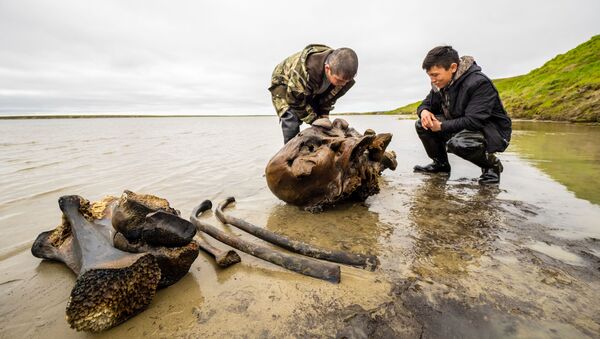Bone fragments were discovered in the shallow waters of the Pechevalavato lake, some 16 miles from the village of Seyakha in Yamalo-Nenets region, the center said in a press release.
"Tundra men brought up to the surface a part of its skull, the lower jaw, several ribs, and a foot fragment with sinews still intact. They moved the findings to the outer ridge of the beach and left them in the water to stop them from drying out," the center said.
На Ямале,село Сеяха нашли останки мамонта.Фрагменты скелета с мягкими тканями обнаружили местные жители,затем приехали археологи.Из озера Печевалавато были извлечены часть черепа,нижняя челюсть,более десятка реберных костей,фаланги,бедренная кость,а также стопа с сухожилиями pic.twitter.com/gJPhRfFSQm
— NaTaLa✊НаТаЛа (@NaTaLa_0402_) July 24, 2020
Russian scientists who came to the site days later retrieved a dozen more ribs, phalanges, and a pelvic bone. The center's director, Dmitry Frolov, said more massive bone fragments were sticking out of the silt.
"Specialists believe that the rest of the skeleton is most likely embedded in the silt at a greater depth and will require special equipment and time to be recovered," the press release added.
The specimen is believed to be an adult woolly mammoth, whose kind last walked the earth around 4,000 years ago. A second, week-long expedition to the dig site is scheduled for Monday.


